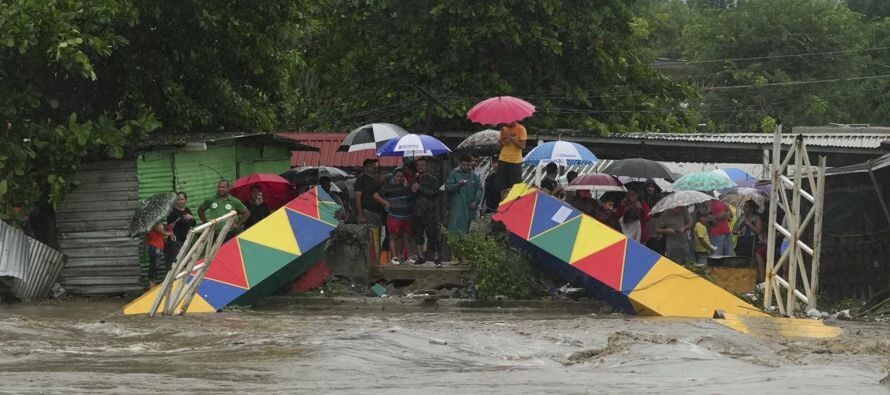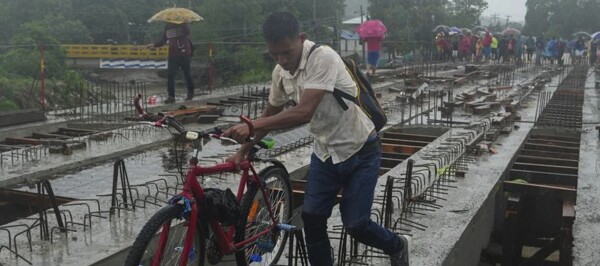
Tropical Storm Sara stalled over Honduras on Saturday, soaking the northern coast of the Central American nation, raising the water level of rivers and leaving several people trapped in their homes. Continuous rain fell overnight and continued into Saturday morning in the city of San Pedro Sula, where the storm blocked access to an entire community when a bridge over a river collapsed.
The U.S. National Hurricane Center (NHC) forecasted that Sara will continue to move on Saturday and Sunday with a "slightly faster west-northwest motion" toward the Gulf of Honduras before making landfall in Belize. It is then expected to head northwest toward the Yucatán Peninsula in Mexico, although meteorologists indicated it likely will not emerge back into the Gulf of Mexico after crossing Yucatán.
People watched nervously as conditions brought back memories of the disastrous hurricane season of November 2020, when two powerful storms slammed the region, displacing hundreds of thousands of people and causing widespread damage. In heavy rain, Mexico lost 2-0 to Honduras, showing the storm's impact in the region.
In November 2020, Eta and Iota passed through Honduras after making landfall in Nicaragua as Category 4 hurricanes. Eta alone was responsible for up to 76 centimeters (30 inches) of rain along the northern coast. The current situation raised concerns among residents, some of whom ignored evacuation alerts issued by the government, as was the case with Carlos Canelas, 48, in the Flor de Cuba neighborhood of San Pedro Sula.
Under the threat of flash flooding and potentially deadly landslides in the region during the weekend, Tropical Storm Sara is expected to continue its course toward the Gulf of Honduras and then toward the Yucatán Peninsula in Mexico. Authorities and residents remain on alert for the possibility of significant impacts in the region, recalling the devastation caused by previous hurricanes in the area.













